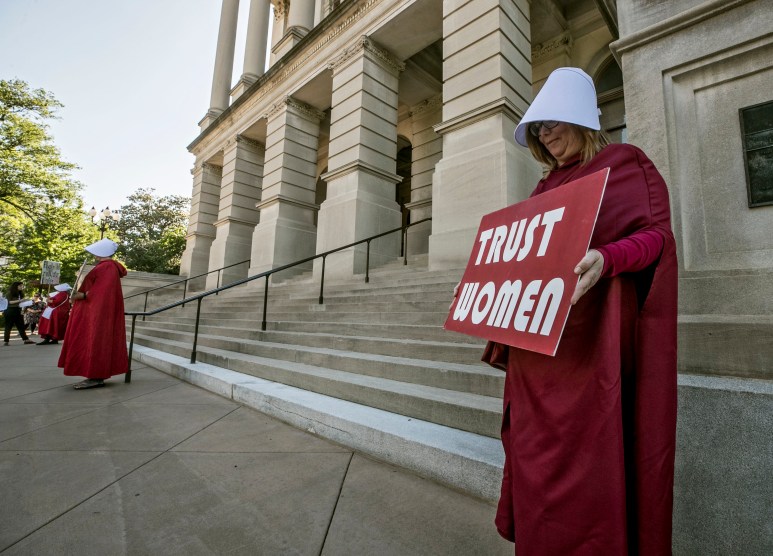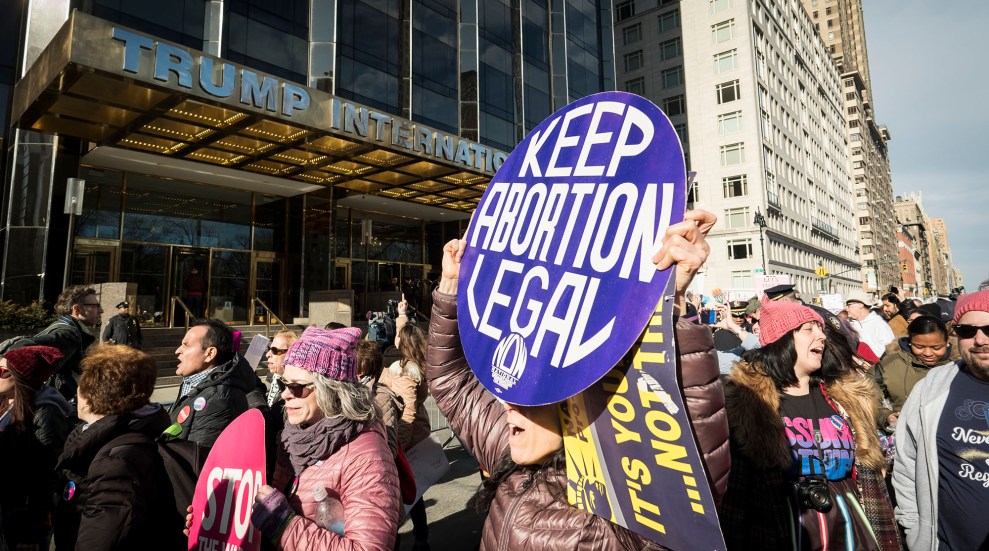When lawmakers in Alabama, Georgia, Missouri, Ohio, Mississippi, Louisiana, and Kentucky passed legislation this year effectively ending all or most abortions in their states, it seemed to confirm what many Americans, pro-choice and anti-abortion alike, have long anticipated: The post-Roe era is coming. What would that new landscape look like? For those who protested the new laws with red cloaks and coat hangers, it’s a nightmarish mashup of the dystopian novel The Handmaid’s Tale and the bad old days of back-alley abortions. Meanwhile, the president of Americans United for Life scoffs at such “ominous warnings,” insisting that “women can, and will, flourish in a society that does not constitutionalize abortion on demand.”
This moment has been a long time coming, the result of a steadily building backlash against choice. Roe v. Wade was decided on January 22, 1973; the effort to undo it began soon after with a proposed constitutional amendment declaring the fetus a person. Since then, states have enacted more than 1,200 restrictions on abortion—more than a third of them since 2010—casting them as measures to protect women’s health, parental rights, or religious freedom. President Donald Trump’s appointments to the Supreme Court have provided an opening for anti-choice activists to solidify these gains and strike directly at Roe through a favorable ruling on an anti-abortion statute.
What all this means is we don’t have to do much speculating about what a post-Roe world would look like, because for millions of women, the right to end a pregnancy has already been rendered meaningless. As of 2014, about 40 percent of American women of reproductive age live in counties without an abortion provider; today, 11 million live more than an hour away from the nearest facility. Missouri’s last clinic is still battling a health department dispute that would have made it the first state in almost 50 years without a single abortion clinic; five other states have only one left.
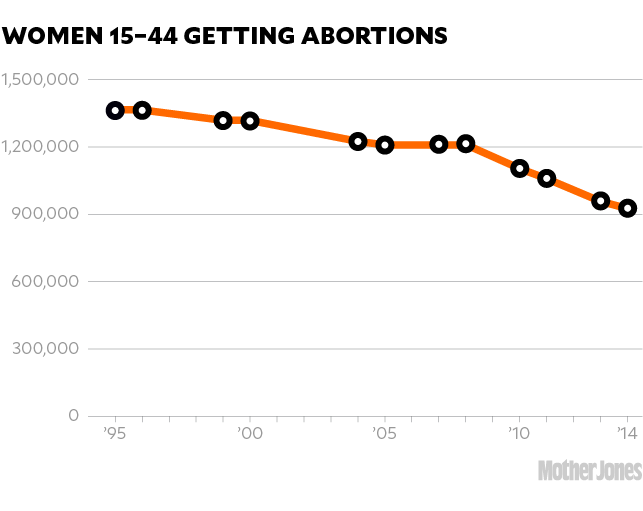
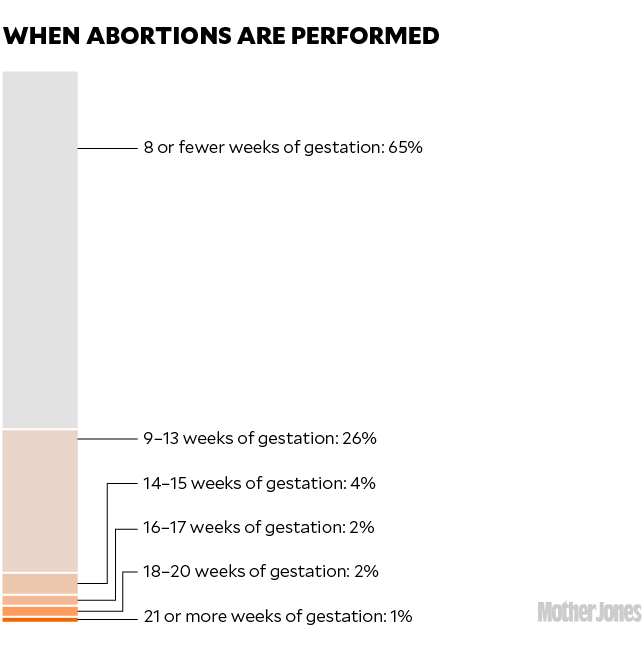
Yet as the clinic infrastructure has eroded, a new, if somewhat patchy, one is being built to fill the gap. Nonprofit groups known as abortion funds, like the Mississippi Reproductive Freedom Fund, directly support women who seek abortions but need assistance with the cost, the distance, and the stress of walking past anti-abortion pickets. The funds were created decades ago in response to restrictions on clinic access—most notably the 1976 Hyde Amendment, which banned Medicaid coverage of abortion—and have had years to get organized. “Abortion funds are ready,” Renee Bracey Sherman, senior public affairs manager at the National Network of Abortion Funds, an association of more than 70 groups across the country, said at a recent panel on the post-Roe landscape.
A flourishing world of underground abortion has also emerged, allowing women to bypass the clinic altogether. Some women are teaching each other at-home procedures. Many more are turning to the internet, where a handful of suppliers have jumped into the market to send abortion pills straight to women’s homes. The pills, misoprostol and mifepristone, are a highly effective and safe combination that clinics have prescribed for early abortions for almost two decades. Last year, a Dutch physician known for performing abortions on a ship in international waters mailed nearly 2,600 medication abortion kits to women in the United States. Researchers and legal experts keeping an eye on the spread of self-induced abortion say these numbers are just the tip of the iceberg.
Abortion by mail is the future. With or without an unfavorable Supreme Court ruling, the black market is here to stay. International online pill providers are difficult targets for law enforcement. And the demand for convenient, safe, and private abortion is unlikely to wane, whether or not in-clinic abortion gets harder to come by. “The train has left the station with medication abortion,” says Jill Adams, executive director of If/When/How, a reproductive justice legal advocacy group. “There’s no going back.”
Of course, it’s not obvious what the high court’s conservative majority will do when it encounters one of the new anti-abortion laws designed to trigger a constitutional review. Perhaps most likely, as happened in 1992, when abortion rights advocates felt certain the court would deal abortion rights a death blow, the justices will diminish Roe’s standing without altogether undoing it. As some legal scholars have speculated, Chief Justice John Roberts, now considered the crucial swing vote in such a case, may side with precedent to preserve his legacy. But there’s always the possibility that, as Trump promised his new justices would do, the court will completely overturn Roe.
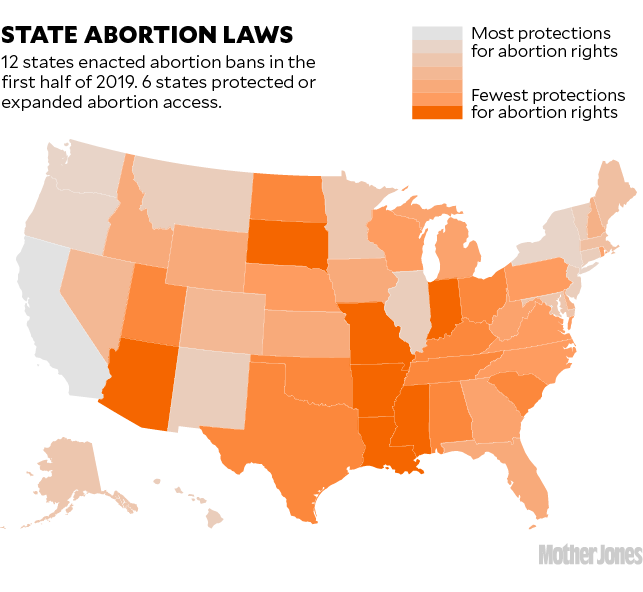
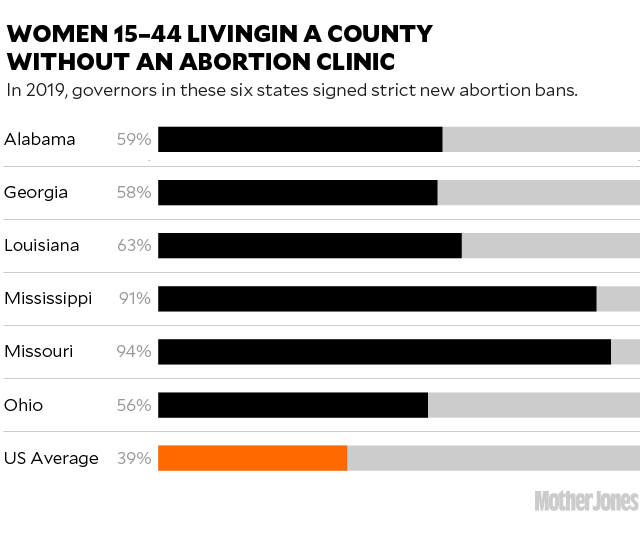
Whatever happens, women will once again be the collateral damage. The lawmakers who backed Alabama’s abortion ban made that clear: The only reproductive domain they seek to regulate is a woman’s uterus. While discussing whether his bill would apply to embryos discarded during in vitro fertilization, state Sen. Clyde Chambliss said it would not, because “the egg in the lab doesn’t apply. It’s not in a woman.” On the decision to omit exceptions for rape from the bill’s language, Chambliss said, “When God creates the miracle of life inside a woman’s womb, it is not our place as human beings to extinguish that life.” At the time, Alabama was one of two states that had no law providing for the termination of rapists’ parental rights over children conceived through sexual assault.
As long as abortion opponents see Trump and the Supreme Court as their biggest opportunity in a generation, the access gap will only widen. States in the South and Midwest will continue to make abortions all but impossible, and others, following the lead of places like Illinois, New York, and California, will become sanctuaries. These divides will reinforce existing inequalities in who can end their pregnancies: If you have the means to travel out of state, you won’t need to worry; if you don’t, you will have to navigate the network of abortion funds or go underground. The only silver lining of the slow-burning attack on abortion is that providers and advocates have had years to prepare their defenses. “We were built for this moment,” Sherman, of the National Network of Abortion Funds, says. “That doesn’t mean we aren’t scared shitless.”




